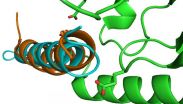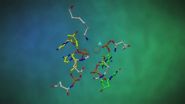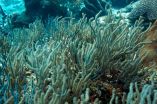(Press-News.org) ITHACA, N.Y. - There is cloud hanging over climate science, but one Cornell University expert on communication and environmental issues says he knows how to help clear the air.
In the December issue of Nature Climate Change, Jonathon Schuldt, assistant professor of communication, argues that only by creating a "science of climate diversity" can climate science and the larger climate change movement overcome a crippling lack of ethnic and racial diversity.
"There is an invisible, but very real barrier to climate engagement," Schuldt said. "We need to engage with all kinds of diverse folks if we're going to face this challenge. It will be a problem if the perception, and the reality, is that it's a bunch of white male scientists at the table."
The commentary, "Facing the diversity crisis on climate science," was born when Schuldt and co-author Adam Pearson, an assistant professor of psychology at Pomona College, began talking about University of Michigan Professor Dorceta Taylor report, "The State of Diversity in Environmental Organizations." In the report, Taylor examined non-profits, government agencies and grant-making foundations and found that non-white minorities comprised no more than 16 percent of staff in these institutions, in spite of constituting 29 percent of the U.S. science and engineering workforce and 38 percent of the American population. The report found that this "white Green Insiders club" narrows research and limits public engagement.
Schuldt agrees, but thinks more than just institutional changes are needed.
"What is missing is science-based solutions that focus on the fundamentally social nature of this problem," the authors state. "Research from social psychology offers insight into factors that can powerfully influence participation."
Schuldt and Pearson argue that early successes in diversifying other STEM research fields, and expanding the role women play in the environmental movement, point to three immediate and essential steps for climate research and outreach organizations.
First, boosting racial and ethnic diversity in climate research and outreach leadership can have an instant impact - provided this leadership is represented in how institutions present themselves. Put simply, Schuldt said, climate science "needs to present a more diverse face."
Next, the authors urge all those who communicate around climate science to confront lingering stereotypes about environmentalism and minority engagement. Schuldt said one of the most pernicious fallacies needs to quickly be dismantled: that concern for climate issues is lacking in America's non-white population. He notes recent work by social science researchers has shown this "underrepresentation by choice" idea to be false, and said climate leaders need to highlight the reality of deep minority community concern.
Lastly, the authors insist organizational messages can help bridge this gap. Among the most destructive ideas that needs to be abandoned, Schuldt said, is that communication around climate science should be "color blind."
"Color-blind communications are, paradoxically, ineffective," Schuldt said. "What it implies to minority individuals is that their unique perspectives and experiences don't matter."
Instead, Schuldt suggested, messages that highlight diversity while pointing toward a common goal are key: "We are all different, but we're all in this together."
The long-range goal, Schuldt and Pearson state, needs to be the creation of a new science of climate diversity. Climate scientists must collaborate with psychology and the social sciences, and these research partnerships need to be supported by academic, public and private institutions alike. Once that is done and a "new nexus of research" begins to form around how climate science and the climate change movement can increase racial and ethnic diversity, those fact-based findings can be used to guide public climate advocacy and policy reform efforts. That, Schuldt said, is the only way a problem as complex and far-reaching as climate change can effectively, and equitably, be addressed.
"Diverse teams are better at solving complex problems, and there's every reason to believe this is the same, if not more important, when facing climate change," Schuldt said.
INFORMATION:
Cornell University has television, ISDN and dedicated Skype/Google+ Hangout studios available for media interviews.
A genetic misfire called the 3q26.2 amplicon can cause real havoc. In fact, it is among the most frequent chromosomal aberrations seen in many cancers, including ovarian and breast cancers.
Researchers behind a study at The University of Texas MD Anderson Cancer Center believe they may have found a molecule-based approach to halting 3q26.2's destructive nature. By manipulating a non-coding microRNA (miRNA) known as miR569 that is part of the amplicon, scientists were able to increase cell death in vitro and in vivo. MicroRNAs are short, non-coding RNA molecules that are ...
Alexandria, Va. -- Methane is often found naturally leaking from the seafloor, particularly in petroleum basins like the Gulf of Mexico or along tectonically active continental margins like the U.S. West Coast, but such plumes were not expected along passive margins, like the East Coast of North America. Now, however, the discovery of hundreds of methane seeps on the seafloor along the U.S. East Coast suggests that such reservoirs may be more common along passive margins than previously thought. The release of such methane globally may have a significant influence on climate, ...
BLOOMINGTON, Ind. -- A new treatment for adult-onset diabetes and obesity developed by researchers at Indiana University and the German Research Center for Environmental Health has essentially cured lab animals of obesity, diabetes and associated lipid abnormalities through improved glucose sensitivity, reduced appetite and enhanced calorie burning.
In preclinical trials, the new peptide -- a molecular integration of three gastrointestinal hormones -- lowered blood sugar levels and reduced body fat beyond all existing drugs, according to the work co-led by IU Distinguished ...
Scientists from the Spanish National Cancer Research Centre (CNIO), led by Guillermo Montoya, have developed a method for producing biological crystals that has allowed scientists to observe --for the first time-- DNA double chain breaks. They have also developed a computer simulation that makes this process, which lasts in the order of millionths of a second, visible to the human eye. The study is published today by the journal Nature Structural & Molecular Biology.
"We knew that enzymes, or proteins, endonucleases, are responsible for these double strand breaks, but ...
Sexual behaviour of teenage girls does not appear to be impacted by the human papilloma virus (HPV) vaccine, according to Queen's researchers Drs. Leah Smith and Linda Lévesque.
There are concerns the vaccine, which guards against four types of the HPV shown to cause cervical cancer and anogenital warts, may give girls a false sense of security about contracting sexually transmitted infections (STIs) and lead them to engage in riskier sexual activity.
"These findings suggest fears of increased risky sexual behaviour following HPV vaccination are unwarranted and should ...
When cancer is diagnosed, the grade of its malignancy is a central concern for both patients and their physicians. This value is used to determine how intensively and how radically the cancer must be treated. Particularly in the case of prostate cancer, the disease can take widely varying courses in different patients. Therefore, cancer researchers have been looking for measurable, reliable biomarkers that give clues about the aggressiveness of a tumor in order to choose an appropriate therapy.
In many types of cancer, alterations in a tumor's genetic material indicate ...
MIAMI - A new study on tropical shallow-water soft corals, known as gorgonians, found that the species were able to calcify and grow under elevated carbon dioxide concentrations. These results suggest that Caribbean gorgonian corals may be more resilient to the ocean acidification levels projected by the end of the 21st century than previously thought.
An international team of scientists, including from the University of Miami (UM) Rosenstiel School of Marine and Atmospheric Science, tested the effects of elevated CO2 concentrations on the growth and calcification rates ...
Study results of CD19-directed chimeric antigen receptor (CAR) therapy using the Sleeping Beauty non-viral transduction system to modify T cells has demonstrated further promise in patients with advanced hematologic malignancies.
Patients who had acute lymphocytic leukemia (ALL), non-Hodgkin lymphoma (NHL) or chronic lymphocytic leukemia (CLL) were part of clinical trials at The University of Texas MD Anderson Cancer Center, which used the Sleeping Beauty gene transfer system initially discovered at the University of Minnesota.
Results from the study were presented ...
Low doses of fluoxetine - better known as the anti-depressant Prozac - could hold the key to preventing PMS symptoms, an international team of researchers has found.
Up to 80 per cent of women are thought to suffer from premenstrual syndrome (PMS), which can be a debilitating condition with symptoms such as anxiety, irritability, fatigue, sleep deprivation and increased sensitivity to pain.
PMS appears to be triggered by the fall in secretion of the ovarian sex steroid hormone progesterone that occurs towards the end of the menstrual cycle and leads to a decline in ...
In 2012 the Mars Science Laboratory landed in the fascinating Gale crater. The Gale crater is of such great interest because of the 5.5 km high mountain of layered materials in the middle. This material tells an intricate story of the history of Mars, perhaps spanning much of the existence of this mysterious planet.
Once positioned, the Curiosity rover began field studies on its drive toward Aeolis Mons (also unofficially known as Mount Sharp), the central peak within the crater. Curiosity has travelled more than 9.4 km so far and during its trip up the mountain, Curiosity ...





